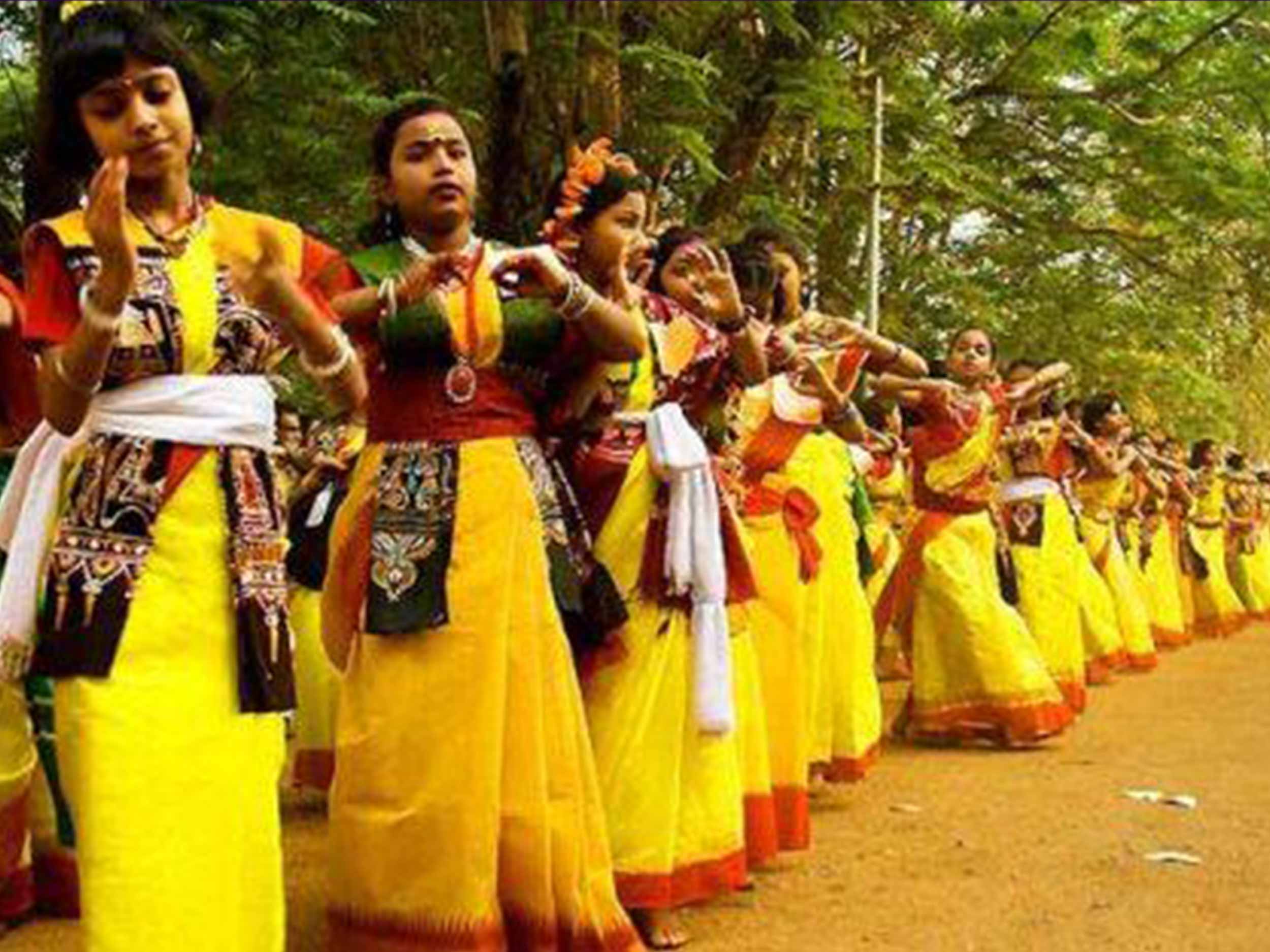
Basanta Utsab: The Festival of Spring and Colors
By Meenakshi G on January 22, 2025
Basanta Utsab, or the Spring Festival, is a vibrant celebration of the arrival of spring, infused with music, dance, and colors. The festival, rooted in Bengali culture, was popularized by Rabindranath Tagore at Shantiniketan. It’s celebrated with great enthusiasm, blending art, tradition, and nature in a joyous symphony of colors.
The name “Basanta Utsab” translates to “Spring Festival” and represents the harmony between humanity and nature, emphasizing renewal, beauty, and joy.
The Significance of Basanta Utsab
Basanta Utsab holds special cultural and emotional value:
- Celebration of Nature: It marks the rejuvenation of nature, with flowers blooming and trees coming alive.
- Cultural Heritage: Symbolizes Bengali cultural pride, blending Tagore’s artistic vision with traditional festivities.
- Unity and Joy: Brings communities together to celebrate with love, laughter, and togetherness.
- Aesthetic Harmony: The festival merges the arts, including Tagore’s poetry and songs, into a holistic cultural experience.
For many, Basanta Utsab is more than a festival; it’s an expression of life and joy.
How Basanta Utsab is Celebrated
The festivities of Basanta Utsab are a blend of tradition and creativity:
1. Welcoming Spring
Participants wear yellow (symbolizing spring) and other bright colors, adding a radiant glow to the celebration. Shantiniketan’s open spaces are adorned with floral decorations, creating a picturesque atmosphere.
2. Cultural Performances
Students and participants present dance dramas, songs, and recitations, primarily composed by Rabindranath Tagore. These performances celebrate the essence of spring and human connection with nature.
3. Playing with Colors
Colors, particularly abir (powdered colors), are playfully smeared on each other as an expression of joy. This aspect of the festival connects it to Holi, celebrated across India.
4. Community Gatherings
Families and friends come together, enjoying meals and sharing memories. The air resonates with Tagore’s melodies and the aroma of traditional Bengali delicacies.
Modern Adaptations of Basanta Utsab
While Shantiniketan remains the hub of Basanta Utsab, the festival has adapted to modern times:
- Urban Celebrations: Cities replicate Shantiniketan’s festivities in cultural hubs and parks.
- Global Reach: Bengalis across the world celebrate Basanta Utsab, blending it with local customs.
- Eco-Friendly Festivities: Natural colors and sustainable practices are promoted to respect the environment.
These changes ensure that Basanta Utsab thrives as a cherished tradition, even in contemporary settings.
Tips for Experiencing Basanta Utsab
- Visit Shantiniketan: Experience the festival where it began, amidst its cultural and natural charm.
- Wear Traditional Colors: Dress in yellow, orange, or other bright hues to embrace the spirit of spring.
- Capture the Moments: Document the joy, performances, and vibrant atmosphere to relive the memories.
- Respect the Environment: Use eco-friendly colors and materials to celebrate responsibly.
Conclusion
Basanta Utsab is not just a celebration; it’s a reminder of the beauty and harmony of life. It invites everyone to immerse themselves in the joys of spring, the arts, and human connection.
This year, whether you celebrate at Shantiniketan or bring the spirit of Basanta Utsab to your home, let the festival inspire creativity, unity, and gratitude for nature’s bounty.